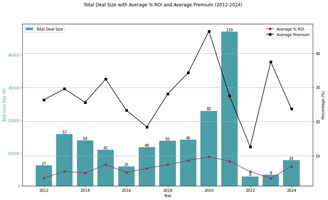Navan, Inc. (NASDAQ: NAVN) has officially filed to go public, bringing one of Silicon Valley’s most...
Neptune Insurance Charts a $2.9B Course on the NYSE

Neptune Insurance Holdings Inc. is preparing for its Wall Street debut, filing to list its Class A common stock on the New York Stock Exchange under the ticker NP. The St. Petersburg–based insurtech is offering 18.4 million shares, all from existing stockholders, at a proposed price range of $18 to $20 per share. At the midpoint of $19, the IPO would value Neptune at roughly $2.9 billion on an enterprise basis, based on 94.6 million Class A shares and 43.4 million Class B shares outstanding post-offer, adjusted for net debt. Lead underwriters include Morgan Stanley, J.P. Morgan, BofA Securities, Goldman Sachs, Evercore ISI, and a broad syndicate of financial institutions.

This is a secondary-only IPO—Neptune itself won’t receive proceeds. Instead, early backers like Bregal Sagemount and FTV Capital are selling down their stakes. The dual-class structure ensures founder and CEO Trevor Burgess and affiliates will retain control through Class B shares with 10 votes each.
Neptune stands out with its fully digital MGA model. Its proprietary platforms—Triton for automated underwriting and Poseidon for policy management—allow the company to price flood and earthquake coverage in under two seconds without human underwriters. The company distributes through tens of thousands of agents nationwide, working with more than 30 reinsurers and insurance carriers who assume the balance sheet risk. Neptune has become the largest private flood insurer in the U.S., with eligibility in all 50 states. The company also expanded into parametric earthquake coverage through its 2021 acquisition of Jumpstart.

Unlike many insurtech peers, Neptune is both fast-growing and profitable. Revenue climbed more than 40% in 2024 while net income nearly doubled year-over-year. In the first half of 2025, Neptune earned $21.6 million on $71.4 million of revenue, keeping net margins above 30% and showcasing the leverage of its technology-driven underwriting model.
Looking forward, the company is leaning into new products and markets, including an excess flood offering launched in 2024 and a potential indemnity-based earthquake product for California. Its data “flywheel”—29 million quotes and more than 1 million bound policies since inception—continues to feed its machine learning models, strengthening pricing and risk selection over time.

Investor sentiment appears constructive: cornerstone investors T. Rowe Price and AllianceBernstein have indicated interest in up to $75 million of shares at the IPO price, a strong signal in a volatile market. Still, the deal is structured aggressively with all proceeds going to insiders, leaving public investors to weigh Neptune’s profitable growth story against governance concerns tied to its controlled-company status.
If successful, Neptune would join a short list of insurtechs to go public with both scale and profitability—a combination the market has been hungry for. With its AI-driven underwriting model, deep reinsurer partnerships, and expanding product suite, Neptune is positioning itself as the tech-powered alternative to the government-run NFIP.


